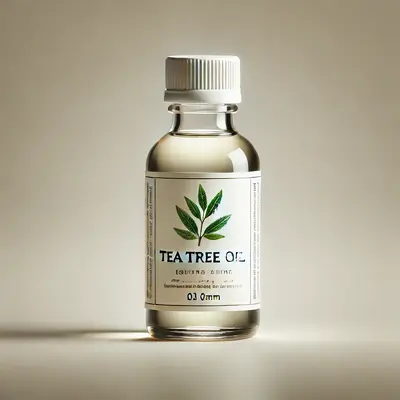Dealing with head lice can be a frustrating and relentless task. These tiny pests are not only a nuisance but can quickly spread among children and even adults in close contact. If you’re not a fan of using harsh chemicals or spending a fortune on over-the-counter treatments, you’re in luck. There are plenty of home remedies that many people swear by—some that might even be hiding in your kitchen cabinets. Let’s take a look at some popular, unusual, and science-backed options to get rid of lice at home.
The Olive Oil Approach
One of the most effective home remedies for lice treatment involves olive oil. Olive oil acts as a suffocant, covering the lice and preventing them from getting oxygen. To use this remedy, apply a generous amount of olive oil to the scalp and hair, making sure every strand is coated. Leave it on for at least six to eight hours or overnight with a shower cap to keep things tidy.
Does it work? Many parents attest that olive oil is one of the most effective natural solutions for getting rid of lice. However, it takes patience—this method needs to be repeated every few days to make sure you target any newly hatched lice.
The Power of Tea Tree Oil
Tea tree oil has gained a reputation for being a powerful home remedy for lice treatment. Known for its antibacterial and antifungal properties, tea tree oil can be toxic to lice. To try this method, mix one teaspoon of tea tree oil with three tablespoons of carrier oil (like coconut or olive oil). Apply to the hair and scalp, leaving it on for about 30 minutes before combing and rinsing.
Studies have shown tea tree oil can be effective against lice, but it is crucial to remember that it can irritate sensitive skin. Always conduct a patch test before applying it all over the scalp, especially with children.
Mayonnaise: A Controversial Yet Popular Solution
Another home remedy people often turn to is mayonnaise. It may sound strange, but mayonnaise is said to work similarly to olive oil, suffocating lice and making it easier to comb them out. Apply full-fat mayonnaise generously to your child’s scalp, then cover it with a shower cap and leave it on for several hours or overnight.
While there are mixed opinions on whether or not mayonnaise is as effective as other oils, many parents swear by it. The biggest downside? It’s messy, and the odor is not something everyone can tolerate.
Vinegar Rinse for Nits
One of the biggest challenges with lice is not the adults but the nits (lice eggs). Removing nits from hair is tedious, and that’s where vinegar comes into play. Vinegar’s acidic nature helps loosen the nits from the hair shaft, making it easier to comb them out. After applying a lice treatment (like olive oil or tea tree oil), rinse the hair with a solution of equal parts vinegar and water.
While vinegar alone won’t kill lice, it is an effective tool for making the removal of nits less time-consuming and less frustrating.
Coconut Oil and Apple Cider Vinegar Duo
For a two-step approach, try combining coconut oil and apple cider vinegar. Coconut oil works similarly to other oils—by suffocating lice—while the apple cider vinegar helps loosen nits. Begin by rinsing the hair with apple cider vinegar and letting it dry. Follow up by coating the scalp and hair with coconut oil, covering it for a few hours. Many parents find this combination effective because it targets both lice and nits.
Combing: The Crucial Step
No matter which home remedy you choose, the lice comb is perhaps the most essential tool. Specially designed metal-toothed combs are crucial for removing both lice and nits. Wet combing, combined with your choice of oil treatment, helps ensure the lice are physically removed from the scalp and hair. It’s tedious but effective, and should be done every three to four days for at least two weeks to ensure no lice are left behind.
Myths and Misconceptions
You may have heard of various household products being used for lice treatment, like petroleum jelly or kerosene. While some people may claim these work, they often come with potential risks, such as scalp irritation, severe mess, and even fire hazards (in the case of kerosene). It’s best to stick to safe, tried, and tested remedies to avoid complications.
The Emotional Toll of Lice
Many parents admit that dealing with lice can be emotionally draining. The constant washing, combing, and anxiety about the infestation spreading takes a toll. Martha, a mother of two, shares, “We tried every shampoo out there, but it wasn’t until I found an old jar of coconut oil in my pantry that we finally managed to get rid of the lice for good. The process isn’t quick, but it worked, and it saved us a lot of money.”
Final Thoughts: Patience and Persistence
Home remedies for head lice treatment require persistence and patience. Unlike chemical treatments that promise instant results, these remedies take time and multiple applications. While oils, vinegar rinses, and natural ingredients may not give you overnight success, many families prefer these options for their affordability and the comfort of avoiding harsh chemicals.
Remember, no remedy works without consistent effort—combing is key, and multiple applications are a must. But with a bit of perseverance, those pesky critters can be dealt with right in the comfort of your home, without breaking the bank or resorting to harsh chemicals.
About the Author
Reyus Mammadli is the author of this health blog since 2008. With a background in medical and biotechnical devices, he has over 15 years of experience working with medical literature and expert guidelines from WHO, CDC, Mayo Clinic, and others. His goal is to present clear, accurate health information for everyday readers — not as a substitute for medical advice.







